Chest Tightness
Chest Tightness can feel like a dull aching or like a sudden stab. Chest Tightness can occasionally feel burning or crushing. Sometimes the pain starts in the jaw, goes up the neck, and then radiates down one or both arms and the back.
Chest tightness can result from a variety of problems. Infections, trauma, anxiety, lung and cardiovascular disorders, and digestive problems are among the causes.
You could be concerned that you’re experiencing a heart attack if you feel like your chest is tightening. On the other hand, pulmonary, psychiatric, and gastrointestinal disorders can also result in a tight chest.
Numerous problems with your heart, lungs, or digestive system can be the source of your chest pain. While certain causes do not pose a threat to life, others do. A medical professional can diagnose and treat your chest pain, allowing you to feel more at ease. Surgery or medication are two possible therapies for chest discomfort.
What is Chest Tightness?
Any tightness or pain in the chest region is referred to as chest pain. It might travel to other parts of your upper body, such as your neck, jaw, or down your arms. or pain in the chest region is referred to as chest pain.
It might travel to other parts of your upper body, such as your neck, jaw, or down your arms. Pain in the chest may be subtle or acute. You might feel achiness or tightness. Alternatively, you can get a crushing or squeezing sensation in your chest.
Your chest pain may not go away for several minutes or hours. It can go on for six months or more in certain situations. It frequently gets worse when you exhaust yourself and gets better when you relax. It could even occur when you’re sleeping.
There are two possible sensations: one that is localized and another that is more diffuse. There are three possible types of chest pain: central chest pain, right-side chest pain, and left-side chest pain.
If you think your chest pain could be a heart attack or another potentially fatal condition, you should visit a doctor.
Physicians see a lot of patients with chest pain. It is a rather common symptom. It’s not always connected to your heart, though.
Types of Chest Tightness
Based on location and experience, there are two primary forms of chest pain: visceral and somatic.
Visceral
Visceral Chest Tightness might feel like pressure or squeezing and can be profound or dull. Larger surface areas, such as the shoulders, mouth, or left arm, are often affected by this kind of pain, which is typically not localized and is caused by nerves that are close to the spinal cord. Visceral discomfort frequently has associated symptoms like nausea and vomiting.
Somatic
Sharp, stabbing or pinching sensations are characteristics of somatic pain, which is more focused. When this kind of pain occurs, the particular area of the pain is typically identifiable. Occasionally are areas other than the chest affected by the pain.
Causes of Chest Tightness
Chest pains may be caused by lung, digestive, cardiac, or other problems. Since there are so many potential causes, they are challenging to diagnose. The first thing that medical professionals search for is possible life-threatening causes.
Causes of Chest Tightness include:
- Heart attack (a low blood flow to the heart).
- Coronary artery disease (CAD) is a condition where the arteries in your heart narrow or become blocked.
- A rupture in a heart artery is called a coronary artery dissection.
- Pericarditis(Inflamed sac surrounding your heart).
- hypertrophic cardiomyopathy: Thick heart muscle is known as hypertrophic cardiomyopathy.
- Aortic dissection, or rupture of the main artery.
- Aortic aneurysm: a weak spot in the biggest artery in your body.
- Mitral valve prolapse(Heart valve lacking a firm seal).
- Aortic stenosis is a condition in which the heart valve becomes closed, obstructing blood flow.
- Irregular heart rhythm.
- Acid reflux or Chronic Gastroesophageal reflux disease (GERD).
- Ulcers, or lesions on the lining of your stomach.
- Esophageal spasms (esophageal tube).
- Inflamed food tube syndrome, or esophagitis.
- Gallstones are made of solidified digestive juice.
- A hiatal hernia is the movement of a portion of the stomach towards the feeding tube.
- An infection of the stomach lining is called Gastritis.
- Inflamed pancreas, or pancreatitis.
- Pulmonary embolism (PE), is a lung clot caused by blood.
- pulmonary ailment often referred to as chronic obstructive pulmonary disease (COPD).
- Lung infection, pneumonia.
- Inflammation of the lining of your lungs, pleurisy, or pleuritis.
- Pneumothorax, or lung collapse.
- High blood pressure in the pulmonary arteries is known as pulmonary hypertension.
- Narrowed airways due to asthma.
- Fractured ribs (broken ribs).
- Strained muscle in the chest.
- Costochondritis, or enlarged cartilage in the chest.
- Chickenpox (rash and infection).
- Carcinoma of the lung.
- A panic attack is a quick, intense fearful feeling.
Some causes of chest discomfort are potentially fatal. Some lung-related causes of chest discomfort are also included. It’s best to consult a doctor who can diagnose and treat your chest discomfort.
Signs and Symptoms of Chest Tightness
Heart-related symptoms of Chest Tightness include:
- Pressure.
- Squeezing.
- Busting.
- Tearing.
- Fullness.
Additionally, you might experience:
- Fatigued.
- Short of breath.
- Discomfort in your back, neck, jaw, shoulders, arms, and stomach.
- Sick to your abdomen.
- Sweaty.
- Light-headed.
- Certain symptoms are also associated with lung problems that immediately require medical attention.
Treatment of Chest Tightness
The reason for the discomfort determines how to manage Chest Tightness. As soon as you seek aid, you’ll receive emergency care if your Chest Tightness is being caused by a heart attack. This might involve taking medicine and having surgery to get your heart’s blood flow back.
Your healthcare practitioner will discuss treatment choices with you if your chest pains are being caused by a non-cardiac condition. Depending on the severity of your sickness, they might advise:
- Lifestyle changes: Avoid strenuous activities that can make your pain worse, Pain and inflammation can be lessened with the use of an ice pack or heating pad.
- Medications: Over-the-counter analgesic drugs like acetaminophen or ibuprofen can be used to treat pain.
- A procedure or surgery.
Exercises to relieve Chest Tightness
After a diagnosis, your physician could suggest particular stretches or other exercises to relieve chest tightness and increase your chest muscle’s flexibility and range of motion.
Diaphragmatic Breathing
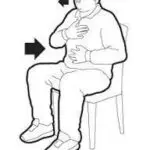
- By using this technique, you may encourage deeper and more effective breathing by activating your diaphragm, which is your main breathing muscle.
- In a peaceful area, choose a comfortable seat or lie down. Grasp your upper chest with one hand and your belly, slightly below your rib cage, with the other.
- Feel your tummy grow against your hand as you slowly take a breath through your nose. Your chest should only slightly raise.
- Like blowing out a candle, let your breath slowly through pursed lips. Feel your hand move inwards on your abdomen and concentrate on drawing your belly button inwards.
- Continue for ten to fifteen minutes.
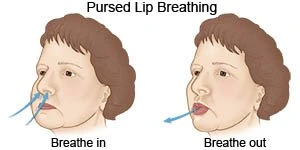
- By lowering your breathing rate, this exercise helps you relax and may even lessen the tightness in your chest that is associated with anxiety.
- Comfortably lie down or sit. Grab 4 quiet breaths via your nose.
- As though you are about to whistle, purse your lips.
- Breathe out slowly for eight counts through pursed lips.
- Continue for ten to fifteen minutes.
Doorway stretch:
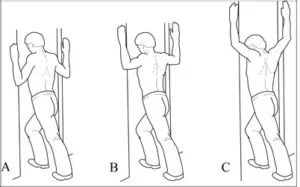
- Place your feet shoulder-width apart while you stand in a doorway.
- Assume shoulder height positions for your forearms on either side of the doorway.
- You should feel your chest stretching as you lean through the doorway forward.
- For 30 seconds, hold.
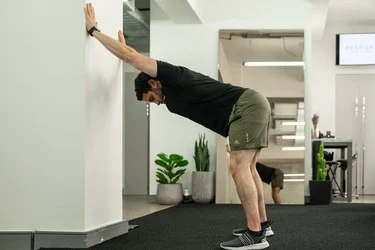
Wall stretch:
- Place your feet shoulder-width apart and face the wall.
- To feel a stretch in your chest, slowly lean forward and place one hand at shoulder height against the wall.
- Repeat on the opposing side after keeping for 30 seconds.
Child’s pose
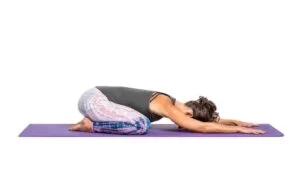
Child’s pose, or Balasana as it is known in Sanskrit, is a mild yoga practice that helps open up the chest. It facilitates deeper breathing and encourages relaxation by opening up the diaphragm and chest.
This is how to do the child’s pose:
- On a yoga mat, begin on your hands and knees. Sit back on your heels, or as close to your heels as you can comfortably reach, with your knees spread hip-width apart.
- You can support yourself if your heels aren’t touching the mat by placing a folded blanket or towel underneath them.
- Lengthen your spine and place your torso between your thighs.
Place your forehead on the mat, a block, or a bolster. - Place your arms either beside your body with your hands facing up or out in front of you with your palms down.
- Breathe slowly and deeply while you close your eyes or avert your attention. Feel your chest expand as you take deep breaths into your abdomen.
As long as you like, maintain this stance for up to five minutes.
Prevention of Chest Tightness
Preserving a healthy lifestyle can decrease your risk of heart, vascular, and other diseases. Among these are:
- Maintaining a nutritious diet. You can develop an eating plan that works for you with the assistance of a trained dietitian or your healthcare professional.
- Controlling any health issues you may have, such as diabetes, high blood pressure, and high cholesterol.
- Accomplishing activity on most days of the week.
- Achieving and preserving a healthy weight for you.
- Reducing the quantity of alcohol you consume.
- Abstaining from tobacco products.
You may prevent certain other causes of chest tightness
- Steer clear of asthma triggers.
- Treat respiratory infections as soon as possible.
- If you are in danger of blood clots, take medicine to control them.
- Obtain a shingles or chickenpox immunization.
- Eat nothing that gives you heartburn.
- Get up and move about a little once every couple of hours on a lengthy drive or flight to avoid blood clots forming in your legs.
FAQs
What causes chest tightness?
What causes chest tightness?
While the discomfort or pain may be upsetting, the source of the tightness is not usually a cardiac problem. Tightness might be caused by asthma, acid reflux, anxiety, or muscular tension. When the cause is not connected to the heart, the discomfort usually goes away on its own.
How do you get rid of a tight chest?
Deeply inhale through your nose, hold for a few seconds, then slowly exhale through your mouth. Techniques for Relaxation: Reduce stress and increase relaxation by engaging in activities such as meditation, progressive muscle relaxation, or yoga, which can decrease chest tightness caused by worry or tension.
Does the tightness in the chest go away?
The pain might continue for many minutes, worsen when you move, go gone, and then return. Often, chest discomfort has nothing to do with the heart. It might be caused by heartburn or other digestive disorders. Don’t put up with it or wait for it to go away.
Is it possible for gas to create chest tightness?
Gas pain can cause chest tightness and stabbing sensations. Gas pain in the chest is commonly experienced as chest tightness or discomfort. Aside from the pain, there may be a burning or stabbing sensation. The pain might spread to the abdomen.
References
- Adcox, M. (2020, April 23). Why does my chest feel tight? Healthline. https://www.healthline.com/health/tight-chest
- Professional, C. C. M. (n.d.-b). Chest pain. Cleveland Clinic. https://my.clevelandclinic.org/health/symptoms/21209-chest-pain
- Curtis, L. (2023, September 27). Chest tightness: Causes and finding relief. Verywell Health. https://www.verywellhealth.com/chest-tightness-5176641
- Toscano, J. (2023, March 29). What you need to know about chest tightness. Health. https://www.health.com/chest-tightness-7370909

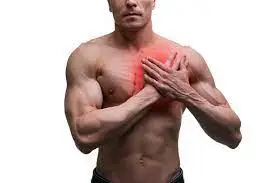
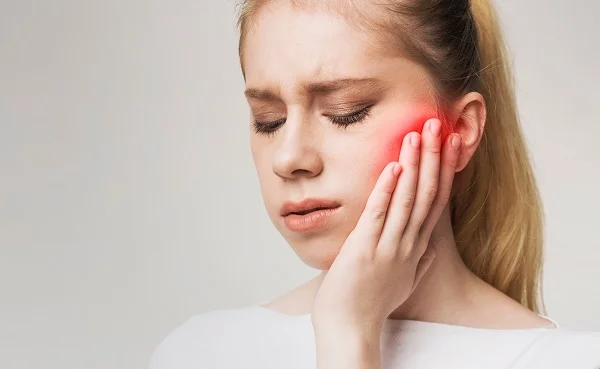

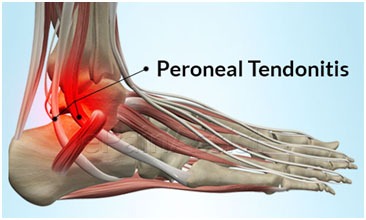
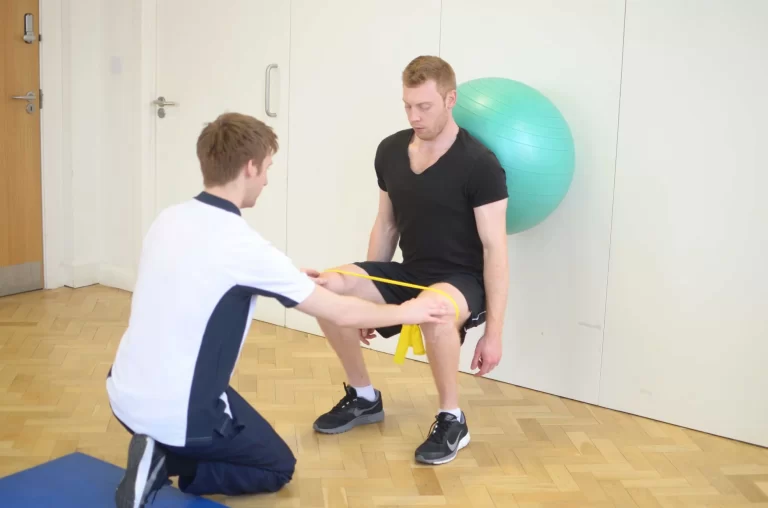

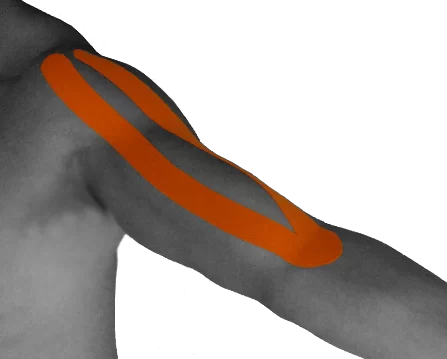
One Comment